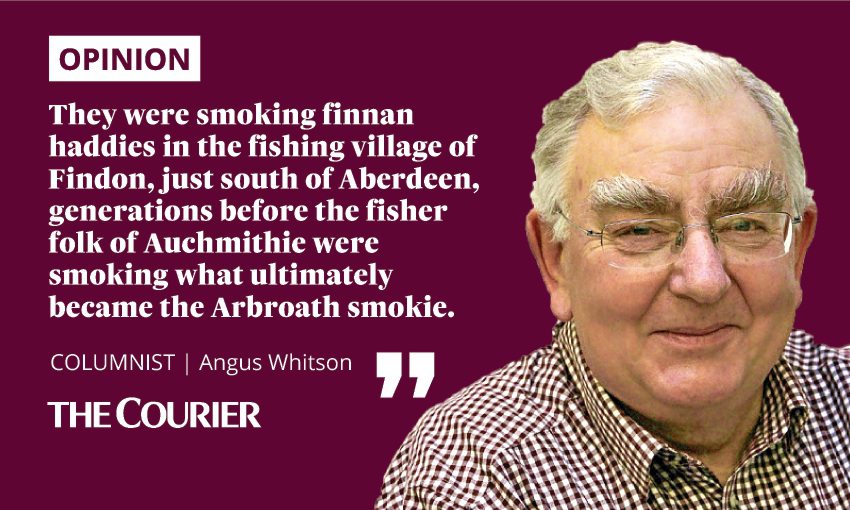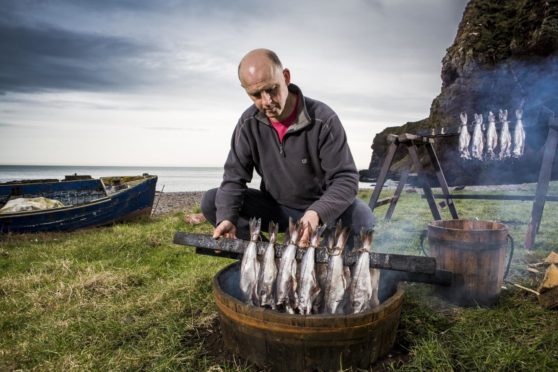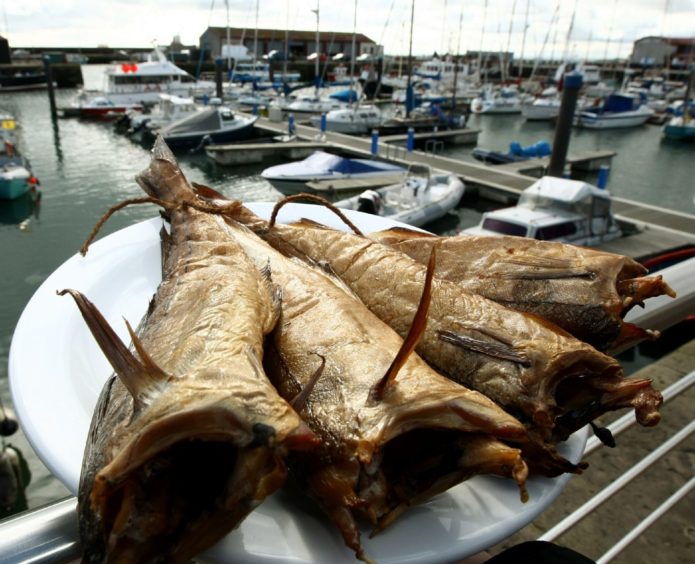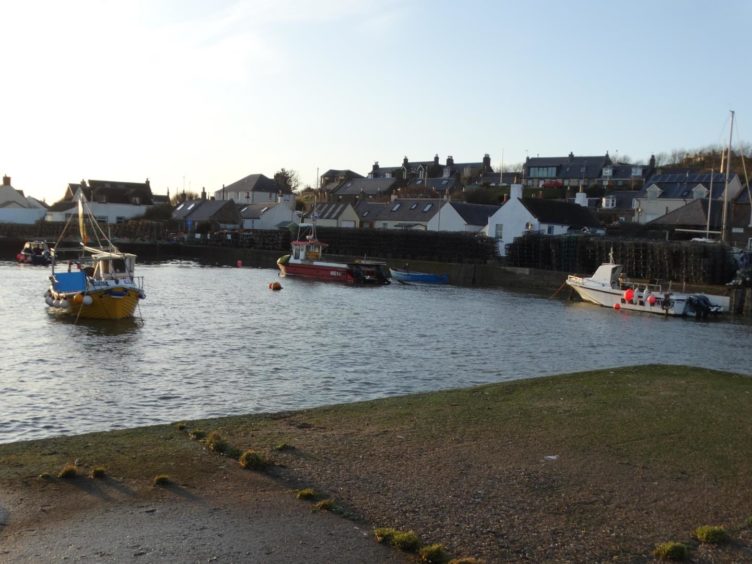Perhaps it’s the strange times we’ve been living through but several unsolicited memories and thoughts have surfaced recently.
Whatever made me think of finnan haddies, for goodness sake?
Along with Arbroath smokies they are one of the north-east’s culinary pleasures although it’s a long time since I’ve seen them in the fishmonger.
The true home of the Arbroath smokie was the ancient fishertoun of Auchmithie four miles up the weatherworn red sandstone coast.
For many years the Auchmithie fishing fleet was larger than Arbroath’s. But in 1829 Arbroath Town Council offered the Auchmithie fishermen land at the Fit o’ the Toon near the harbour, where the Arbroath fishing community lived.

The move from the exposed beach at Auchmithie was welcomed.
It gave the Auchmithie fishermen land to build houses and yards and the assurance of a safe harbour; and the fisher families brought their smokie smoking skills with them.
They were smoking finnan (Findon) haddies in the fishing village of Findon, just south of Aberdeen, generations before the fisher folk of Auchmithie were smoking what ultimately became the Arbroath smokie.
The earliest record of Auchmithie smoked haddocks being sent to Dundee was in 1842.
Nice article in @TheScotsman – can't wait for events to restart and get back to doing what I do #freshoffthebarrel https://t.co/ZdhYlTexql
— Iain R Spink (@IainRSpink) February 26, 2021
By contrast, a reference to Findon haddocks two centuries earlier, in 1642, showed the Findon cure was already well known and enjoyed as far away as Edinburgh where they were known as a “dainty” of Aberdeen.
Findon was one of the dozens of north-east fishing stations which stretched from Fraserburgh to Berwick-on-Tweed.
Some belonged to the monasteries such as Arbroath and Balmerino, others were established by local landowners.
Fisher folk famed for their delicacies
It was one of the smallest stations and is dismissed by Peter Anson in his seminal book Fishing Boats and Fisher Folk on the East Coast of Scotland in a single sentence.
“Beyond Portlethen, a mile farther north is the village of Findon, once famed for its smoked haddocks, but never of much importance as a fishing station, owing to its lack of proper shelter for boats below the steep cliffs.”
Despite this poor assessment Findon retains its historic reputation for producing a quality fish delicacy.
A kipper is a herring, gutted and split and slow cold smoked.
A smokie is a haddock, gutted and headed and fast hot smoked as a round fish i.e. not split.
A finnan haddie is a haddock split and lightly cold smoked, like smokies, on the bone.
You’re unlikely to see finnan haddies in the fish shops but Stephens, Fish Merchants Gourdon, will smoke them to order.
There’s not much call for this once popular fish delicacy these days.
They have lost their popularity because people don’t want to deal with the bones and the skin which give the fish their flavour.
They buy smoked haddock which are haddock fillets, skinned and off the bone and usually dyed yellow.
Versatile finnan haddies are the proper fishy ingredient of Cullen Skink, that most traditional north-east soup, and they go well too in kedgeree.
They are hardly a difficult meal to prepare – even I can do it.
Poach them in 50/50 milk and water and serve them with a poached or scrambled egg, and some spinach on the side for a proper tasty supper.
Villages built for harsh conditions
The original fishing villages grew up informally around their harbours unrestricted by the procedural requirements of planning laws.
Many of the cottages sit gable end onto the sea, presenting least resistance to winter gales, like boats riding out a storm.
Fishing for haddock and cod was by hook and line.
There were great lines – gretlins – and shorter sma’ lines.
The hooks were baited with mussels, often gathered from the mussel beds of Montrose Basin, by the wives. I’ve been told it was a dirty, smelly job.
Small harbours like Catterline have just a stone pier which gave a certain amount of shelter to the boats that fished out of them
Most of the fishing stations eventually had harbours built either by public subscription or by the local landowners.
A number – such as Findon, Usan and Ethie Haven in the south corner of Lunan Bay – were too small or their working life was too short to justify the expense.
Harbours quieter places today
The small harbours are no longer the full-time workplaces of the past with their fleets of open skaffies and half-decked Baldies and Fifies.
Gone too are the Zulu fishing boats with their distinctive raked sterns.
They have been described as the most noble sailing craft ever designed.
Small harbours like Catterline have just a stone pier which gave a certain amount of shelter to the boats that fished out of them.
A few miles south, Johnshaven has an outer harbour and an inner harbour. Its high sea wall provides a safe mooring for vessels from the worst of the winter gales.
The one-time fishing village of Findon sits high on the cliffs above the old fishing station.
Its only historical reference is the delicacy – the dainty – which entered our food chain several centuries ago and which continues to be enjoyed by discerning foodies.


